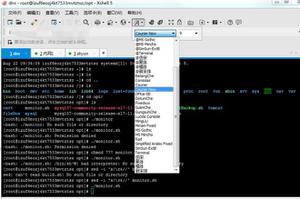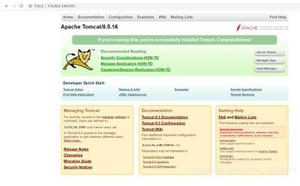Linux中split大文件分割和cat合并文件

当需要将较大的数据上传到服务器,或从服务器下载较大的日志文件时,往往会因为网络或其它原因而导致传输中断而不得不重新传输。这种情况下,可以先将大文件分割成小文件后分批传输,传完后再合并文件。
1.分割 -- split命令
可以指定按行数分割和按字节大小分割两种模式。
(1) 按行数分割
$ split -l 300 large_file.txt new_file_prefix加上-d,使用数字后缀;加上--verbose,显示分割进度:
$ split -l50000 -d large_file.txt part_ --verbose(2) 按字节大小分割
$ split -b 10m large_file.log new_file_prefix2.合并 -- cat命令
$ cat part_* > merge_file.txt[注] split命令语法:
split --hUsage: split [OPTION]... [FILE [PREFIX]]
Output pieces of FILE to PREFIXaa, PREFIXab, ...;
default size is 1000 lines, and default PREFIX is 'x'.
With no FILE, or when FILE is -, read standard input.
Mandatory arguments to long options are mandatory for short options too.
-a, --suffix-length=N generate suffixes of length N (default 2) 后缀名称的长度 (默认为2)
--additional-suffix=SUFFIX append an additional SUFFIX to file names
-b, --bytes=SIZE put SIZE bytes per output file 每个输出文件的字节大小
-C, --line-bytes=SIZE put at most SIZE bytes of records per output file 每个输出文件每行的最大字节大小
-d use numeric suffixes starting at 0, not alphabetic 使用数字后缀代替字母后缀
--numeric-suffixes[=FROM] same as -d, but allow setting the start value
-e, --elide-empty-files do not generate empty output files with '-n' 不产生空的输出文件
--filter=COMMAND write to shell COMMAND; file name is $FILE 写入到shell命令行
-l, --lines=NUMBER put NUMBER lines/records per output file 设定每个输出文件的行数,默认行数是1000行
-n, --number=CHUNKS generate CHUNKS output files; see explanation below 产生chunks文件
-t, --separator=SEP use SEP instead of newline as the record separator; 使用新字符分割
'\0' (zero) specifies the NUL character
-u, --unbuffered immediately copy input to output with '-n r/...' 无需缓存
--verbose print a diagnostic just before each 显示分割进度
output file is opened
--help display this help and exit 显示帮助信息
--version output version information and exit 显示版本信息
The SIZE argument is an integer and optional unit (example: 10K is 10*1024).
Units are K,M,G,T,P,E,Z,Y (powers of 1024) or KB,MB,... (powers of 1000).
CHUNKS may be:
N split into N files based on size of input
K/N output Kth of N to stdout
l/N split into N files without splitting lines/records
l/K/N output Kth of N to stdout without splitting lines/records
r/N like 'l' but use round robin distribution
r/K/N likewise but only output Kth of N to stdout
GNU coreutils online help: <http://www.gnu.org/software/coreutils/>
Full documentation at: <http://www.gnu.org/software/coreutils/split>
or available locally via: info '(coreutils) split invocation'
cat命令语法:
$ cat --hUsage: cat [OPTION]... [FILE]...
Concatenate FILE(s) to standard output.
With no FILE, or when FILE is -, read standard input.
-A, --show-all equivalent to -vET
-b, --number-nonblank number nonempty output lines, overrides -n
-e equivalent to -vE
-E, --show-ends display $ at end of each line
-n, --number number all output lines
-s, --squeeze-blank suppress repeated empty output lines
-t equivalent to -vT
-T, --show-tabs display TAB characters as ^I
-u (ignored)
-v, --show-nonprinting use ^ and M- notation, except for LFD and TAB
--help display this help and exit
--version output version information and exit
Examples:
cat f - g Output f's contents, then standard input, then g's contents.
cat Copy standard input to standard output.
GNU coreutils online help: <http://www.gnu.org/software/coreutils/>
Full documentation at: <http://www.gnu.org/software/coreutils/cat>
or available locally via: info '(coreutils) cat invocation'
功能说明:切割文件。
语 法:split [--help][--version][-<行数>][-b <字节>][-C <字节>][-l <行数>][要切割的文件][输出文件名]
补充说明:split可将文件切成较小的文件,预设每1000行会切成一个小文件。
参 数:
-<行数>或-l<行数> 指定每多少行就要切成一个小文件。
-b<字节> 指定每多少字就要切成一个小文件。支持单位:m,k
-C<字节> 与-b参数类似,但切割时尽量维持每行的完整性。
--help 显示帮助。
--version 显示版本信息。
[输出文件名] 设置切割后文件的前置文件名,split会自动在前置文件名后再加上编号。
使用例子:
split -b 100m 1111.log (按照字节分隔)split -l 1000000 1111.log(按照行数分隔)
1. 分割文件
文件分割可以使用split命令,该即支持文本文件分割,又支持二进制文件分割;而合并文件可以使用cat命令。
1.1 文本文件分割
分割文本文件时,可以按文件大小分割,也可以按文本行数分割。
按文件大小分割
按文件大小分割文件时,需要以-C参数指定分割后的文件大小:
1
$
split
-C 100M large_file.txt stxt
如上所示,我们将大文件large_file.txt按100M大小进行分割,并指定了分割后文件前缀stxt;当不指定前缀时,split会自动对分割文件进行命名,一般会以x开头。
按行分割
文本文件还可以以行为单位进行分割,以行数进行分割时会忽略文件大小,并以-l参数指定分割后文件的行数:
1
$
split
-l 1000 large_file.txt stxt
1.2 二进制文件分割
二进制文件分割类似于按大小分割文本文件,不同的是以-b参数来指定分割后的文件大小:
1
$
split
-b 100M data.bak sdata
2. 文件合并
文件合并使用cat命令,上面几种方式分割的文件都可以使用cat命令合并。
cat命令合并分割文件:
1
$
cat
stxt* > new_file.txt
3. 命令格式
3.1 split命令说明
split命令格式如下:
split [选项]... [要切割的文件 [输出文件前缀]]
命令参数
-a, --suffix-length=N 使用长度为 N 的后缀 (默认 2)
-b, --bytes=SIZE 设置输出文件的大小。支持单位:m,k
-C, --line-bytes=SIZE 设置输出文件的最大行数。与 -b 类似,但会尽量维持每行的完整性
-d, --numeric-suffixes 使用数字后缀代替字母
-l, --lines=NUMBER 设备输出文件的行数
--help 显示版本信息
--version 输出版本信息
3.2 cat命令说明
cat是Linux下使用频率较高的命令之一,该令详细介绍:
cat连接文件并打印到标准输出设备上
cat命令的常见使用场景有:
显示文件内容:
1
$
cat
filename
创建一个空文件:
1
$
cat
> filename
文件合并:
1
$
cat
file1 file2 >
file
以上是 Linux中split大文件分割和cat合并文件 的全部内容, 来源链接: utcz.com/z/509776.html









